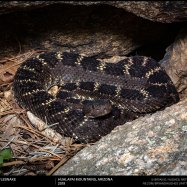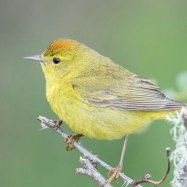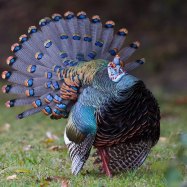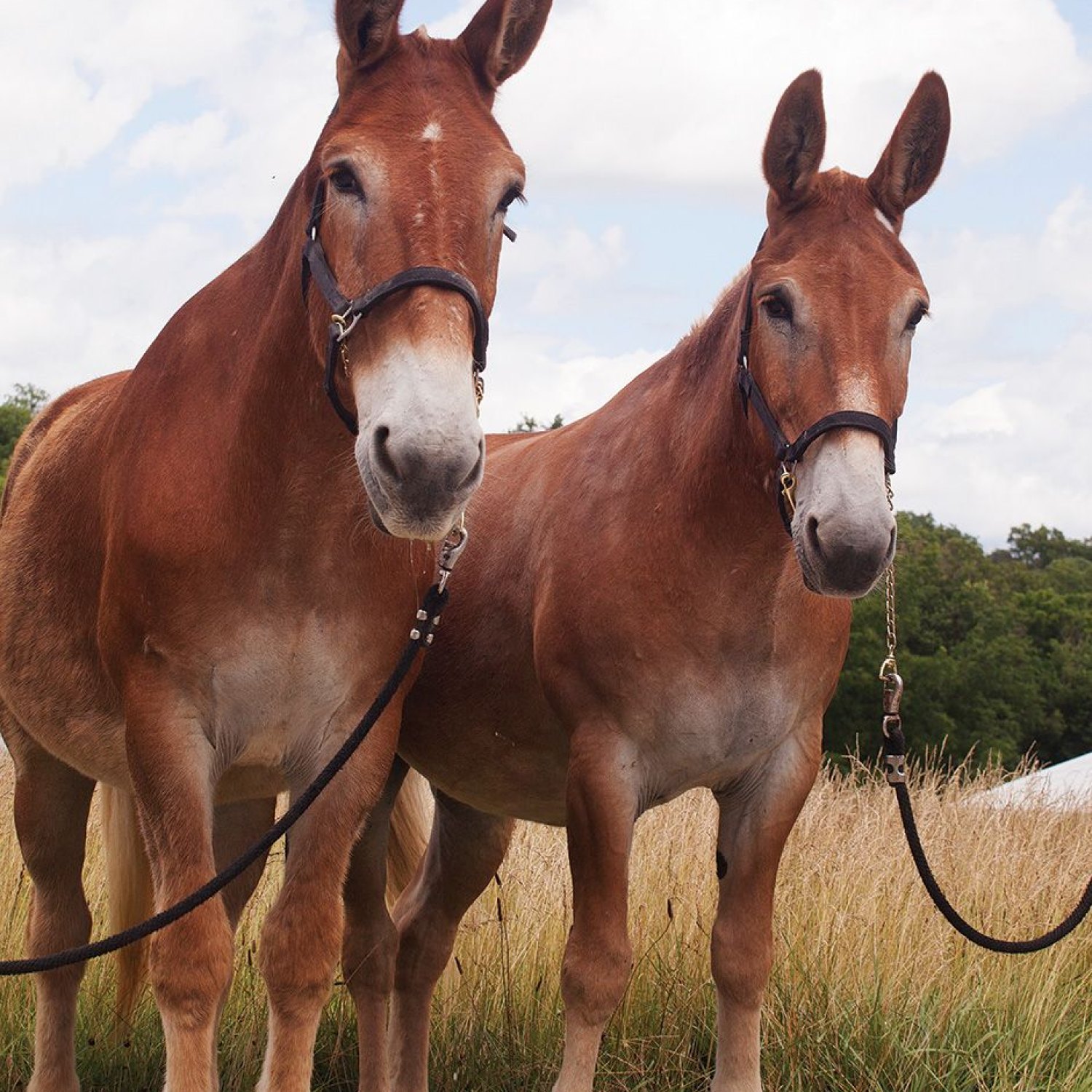
Mule
Varies depending on the breed
The mule, from the Equidae family, is a versatile animal found in various regions around the world. With a body shape similar to horses, they have long ears and come in different breeds, varying in length. From strong pack animals to hard-working farm companions, mules are unique and intelligent creatures worth learning about. #Mule #Equidae #Animals #Horses #VersatileAnimals
Animal Details Summary:
Common Name: Mule
Kingdom: Animalia
Habitat: Varies depending on the region
The Curious and Capable Mule
You may have seen them on farms, in movies, or even at zoos. These hard-working and intelligent creatures have piqued the interest of humans for centuries. With their unique looks and impressive abilities, the mule has become a beloved animal around the world. In this article, we will delve into the fascinating world of mules, exploring their history, characteristics, and role in society Mule.
The Science Behind the Mule
First, let's start with the basics. The scientific name for the mule is Equus asinus × Equus caballus. This may sound complicated, but it simply means that mules are a hybrid of two different species – the donkey (Equus asinus) and the horse (Equus caballus). This unique combination gives mules their distinctive features and abilities.
Like their parents, mules belong to the kingdom Animalia, the phylum Chordata, the class Mammalia, and the order Perissodactyla. They are a part of the Equidae family, which includes horses, donkeys, and zebras. However, unlike their relatives, mules cannot reproduce. They are sterile due to having an odd number of chromosomes, making them a true one-of-a-kind animal.
The Journey of the Mule
Mules have been around for a long time, with evidence of their existence dating back to ancient civilizations Marble Fox. They were first bred by humans as a means of creating a strong and sturdy work animal. The exact origin of the mule is unknown, as they were bred and used in different regions around the world simultaneously.
Some experts believe that mules first originated in Egypt, where they were used for agriculture, transportation, and even in war. Others believe that they originated in China, where they were highly valued for their strength and durability. Regardless of their origin, it is safe to say that mules have been an integral part of human history for centuries.
The Wide Range of Mules
Mules are found in various regions around the world, from Asia and Europe to the Americas and Africa. This is due to their extensive use in different cultures and geographic locations. They have adapted to a variety of environments, from mountains and deserts to farms and cities.
However, unlike other animals that have a specific country of origin, mules do not have a designated homeland. Instead, they have spread and thrived in different parts of the world, primarily due to their resilience and adaptability. Today, mules can be found in almost every region, making them a truly global animal.
The Phenomenon of Hybrid Vigor
Mules are known for their impressive strength and stamina. This is due to a phenomenon known as "hybrid vigor", where the offspring of two different species possess qualities that are superior to those of their parents. In the case of mules, their hybrid vigor gives them increased size, strength, and endurance compared to their donkey and horse parents.
Moreover, mules also inherit the intelligence, sure-footedness, and patience of their donkey parent, making them excellent working animals. They can carry heavy loads, navigate rough terrain, and are easy to train. This is why mules have been used for centuries as pack animals, plows, and in transportation.
The Versatile Herbivore
Mules are herbivores, meaning that they only eat plant-based foods. In the wild, they graze on grass, leaves, and other vegetation. However, when used for agricultural or transportation purposes, mules are often given a more controlled diet of hay, grains, and supplements.
One of the unique abilities of mules is their efficient digestion. Due to their hybrid genetic makeup, mules can efficiently utilize the nutrients from both grass (like the donkey) and grain (like the horse). This makes them a cost-effective animal to feed, as they need less food compared to their purebred parents to maintain their weight and health.
The Look and Size of a Mule
When it comes to appearance, mules can vary greatly depending on their parent breeds. In general, they have a body shape similar to horses, with long legs and a sleek coat. However, they also have long, curved ears that resemble those of a donkey. These ears serve a functional purpose, helping mules to regulate their body temperature and communicate with other animals.
In terms of size, mules can vary greatly depending on their breed and purpose. On average, they can range from 12 to 17 hands (or 48 to 68 inches) in height. However, some mules can grow up to 20 hands (or 80 inches) tall. This makes them larger and stronger than most donkeys and smaller than most horses, making them the perfect size for a variety of tasks.
The Mule's Impact on the World
Mules have had a significant impact on human civilization and continue to do so today. In the past, they were critical in agricultural and transportation industries, helping to build roads, plow fields, and carry goods. In modern times, they are still used in these industries but also play a crucial role in recreational activities like trail riding, showing, and even as companion animals.
Moreover, mules have also played a crucial role in the military. Throughout history, mules have been used in wars, carrying ammunition, supplies, and wounded soldiers. They were also used by explorers, like Lewis and Clark, who relied on mules to carry their equipment and supplies during their expedition.
The Future of Mules
With their incredible abilities and adaptability, mules will continue to be a valuable asset to humans in the years to come. While their role may have changed with the advances in technology, there will always be a demand for these hardy and dependable animals.
Additionally, with the rise of sustainable and ethical practices in agriculture, mules may see an increase in demand as they are an eco-friendly alternative to using heavy machinery. Mules are also proving to be a beneficial partner in animal therapy programs, where they help with relaxation, rehabilitation, and building trust.
The Magic of the Mule
In conclusion, mules are a unique and remarkable species that have made their mark on the world. From their hybrid genetics to their impressive abilities, these animals have captured the hearts and minds of humans for centuries. Their contribution to human civilization, as well as their role in recreation and therapy, highlights the importance and value of mules in our world today. Whether you see them on a farm or in a zoo, the mule's fascinating story continues to intrigue and inspire us.

Mule
Animal Details Mule - Scientific Name: Equus asinus × Equus caballus
- Category: Animals M
- Scientific Name: Equus asinus × Equus caballus
- Common Name: Mule
- Kingdom: Animalia
- Phylum: Chordata
- Class: Mammalia
- Order: Perissodactyla
- Family: Equidae
- Habitat: Varies depending on the region
- Feeding Method: Herbivore
- Geographical Distribution: Worldwide
- Country of Origin: There is no specific country of origin for Mules
- Location: Various regions around the world
- Animal Coloration: Varies depending on the parent breeds
- Body Shape: Similar to horses, with long ears
- Length: Varies depending on the breed

Mule
- Adult Size: Varies depending on the breed
- Average Lifespan: 30-40 years
- Reproduction: Mules are sterile and do not reproduce naturally
- Reproductive Behavior: N/A
- Sound or Call: Mules can produce sounds similar to both horses and donkeys
- Migration Pattern: N/A
- Social Groups: Mules can live in social groups or solitary depending on the individual
- Behavior: Mules are known for their intelligence and surefootedness
- Threats: Varies depending on the region and habitat
- Conservation Status: Not applicable
- Impact on Ecosystem: Mules can play a role in transport and agriculture
- Human Use: Mules have been used for transportation, agriculture, and recreational activities
- Distinctive Features: Long ears, short mane, and athletic build
- Interesting Facts: Mules are a hybrid between a male donkey and a female horse
- Predator: Varies depending on the region and habitat

Equus asinus × Equus caballus
Mules: The Hybrid Wonder of the Equine World
When we think of typical equine animals, we often think of horses and donkeys. What many people may not realize is that there is a unique hybrid species that combines the best of both these animals – the mule.Mules, also known as hinny or molly, are an interesting and often misunderstood creature. They have been around for centuries and have played a significant role in human history and the development of societies around the world PeaceOfAnimals.Com. But what exactly makes mules so special and distinct? Let's take a closer look at these hybrid wonders of the equine world.
Anatomy and Size
Mules come in various sizes, depending on the breed. They can range from small to large, with an average size of around 4 to 5 feet at the shoulder and can weigh anywhere from 800 to 1,200 pounds. Some mule breeds, such as the Mammoth Jack, can grow up to 15 hands tall and weigh up to 1,500 pounds, making them comparable in size to some draft horses.One of the most distinctive features of mules is their long ears, which can grow up to 30 inches in length. These long ears are often associated with their donkey heritage, and they serve a practical purpose as well. Mules have excellent hearing and can move each ear independently, allowing them to be more aware of their surroundings and potential danger.
In addition to their long ears, mules have a short mane and tail, unlike horses, who have long and flowing manes and tails. This feature also sets them apart from their horse lineage and makes them easily distinguishable Mexican Mole Lizard.
Lifespan and Reproduction
Mules have a significantly longer lifespan compared to their equine counterparts, with an average lifespan of 30 to 40 years. This is due to their hybrid vigor, which is a result of combining the genetic traits of two different species.However, despite their long lifespan, mules are sterile and cannot reproduce naturally. This comes as a surprise to many people, as mules are considered a cross between a horse and a donkey. The reason for this is that horses and donkeys have a different number of chromosomes, making it impossible for them to produce offspring. Therefore, mules must be bred artificially through a process called hybridization.
Behavior and Social Groups
Mules are known for their intelligence, surefootedness, and gentle disposition. They possess the intelligence of a donkey combined with the athleticism and endurance of a horse, making them an ideal working animal. They are often used in agriculture and transportation due to their strength and ability to perform in challenging terrain.In the wild, mules can live in social groups or be solitary, depending on the individual. They are highly social animals, displaying complex social behaviors and forming strong bonds with both humans and other animals. They are also known for their calm and steady temperament, making them great companions.
Sound and Communication
Mules are capable of producing sounds that are a mixture of their horse and donkey heritage. They can create a wide range of vocalizations, from a high-pitched whinny like a horse to a braying sound like a donkey. They also use body language and facial expressions to communicate with other animals and humans.Threats and Conservation Status
The threats to mules vary depending on the region and habitat. In some areas, they face predation from large carnivores such as wolves and mountain lions. In others, they may face threats from humans who may see them as competition for resources or even hunt them for their meat. But overall, mules do not face any significant threats and are usually well-cared for by their owners.When it comes to conservation status, mules are not considered a distinct species and are not listed on any conservation lists. However, they play a crucial role in helping humans in transport and agriculture, which has a positive impact on the ecosystem.
Human Use
Throughout history, mules have been used for various purposes by humans, including transportation, agriculture, and recreational activities. They were widely utilized in ancient civilizations, such as the Roman Empire, for their strength and endurance.In more recent times, mules have been used in farming and to carry heavy loads in mountainous areas, where they have proven to be a valuable asset. They are also popular in the equestrian world, where they are used in long-distance trail riding and as show animals.
Distinctive Features
Aside from their long ears, short mane, and athletic build, mules have several other distinctive features that set them apart from their equine counterparts. Mules have a different skeletal structure compared to horses, giving them a narrower chest and more prominent hips. They also have a tougher hide and stronger hooves, making them better suited for rocky terrains.One of the most intriguing features of mules is their ability to adapt to their environment. They are incredibly surefooted and can navigate through rough and steep terrain that would be difficult for even the most experienced horse.
Interesting Facts
Mules have a rich history and have been a part of human life for centuries. Here are some interesting facts about mules that you may not know:- Mules can come in a variety of colors, including black, brown, gray, and even spotted.
- The word "mule" comes from the Latin word "mulus," meaning hybrid.
- Mules are known for their incredible endurance and have been known to travel long distances without tiring.
- Mules can survive on less water than horses, making them more resilient in arid climates.
- One of the oldest mules on record was a molly named "Old Billy," who lived to be 62 years old.
Predators
Similar to threats, the predators of mules vary depending on the region and habitat. In the wild, mules may face threats from predators such as wolves, coyotes, and mountain lions. However, when trained and domesticated, mules are not in danger of any predators.In Conclusion
Mules are an incredible and unique species with a rich history and an essential role in human society. They possess a combination of traits from two different species, making them strong, intelligent, and adaptable animals. Despite not being able to reproduce naturally, they continue to thrive and play a vital role in various human activities.Next time you come across a mule, take a moment to appreciate all that these hybrid wonders have to offer and the significant impact they have had on human civilization throughout history.
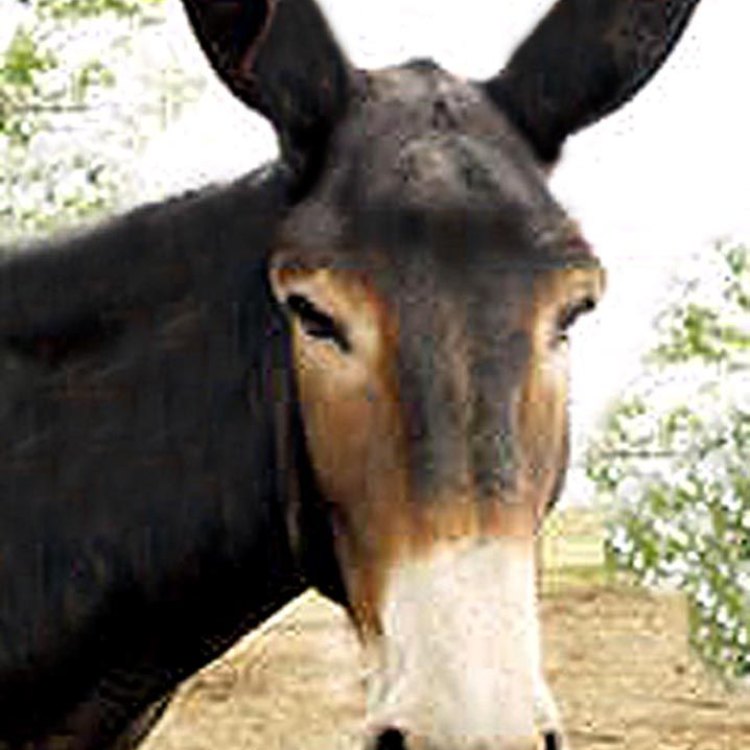
The Curious and Capable Mule
Disclaimer: The content provided is for informational purposes only. We cannot guarantee the accuracy of the information on this page 100%. All information provided here may change without prior notice.




